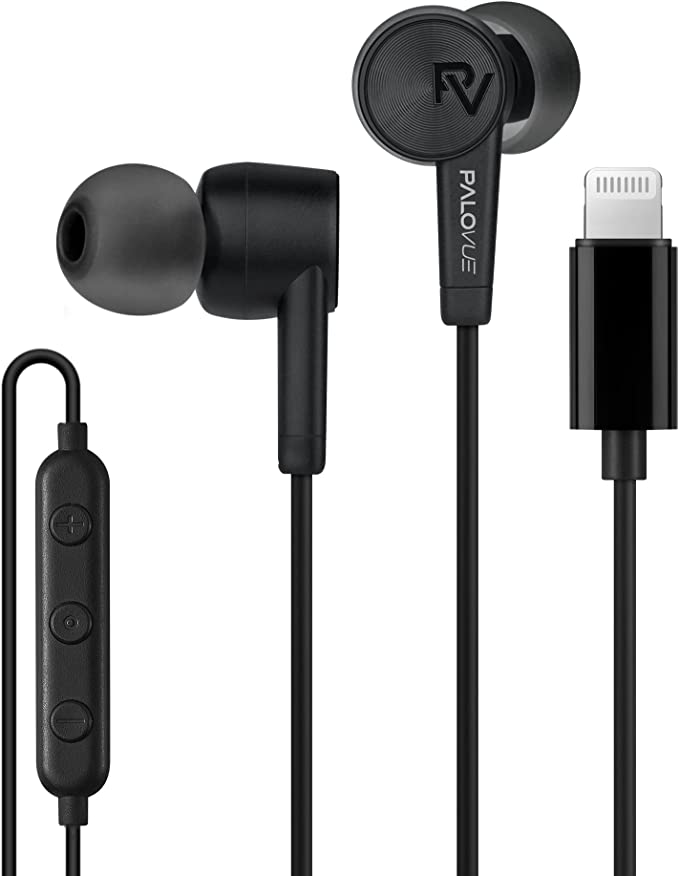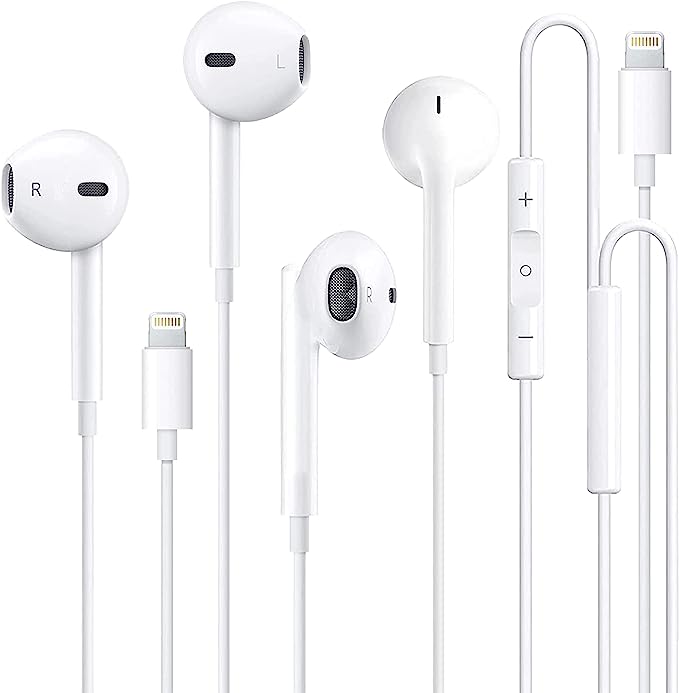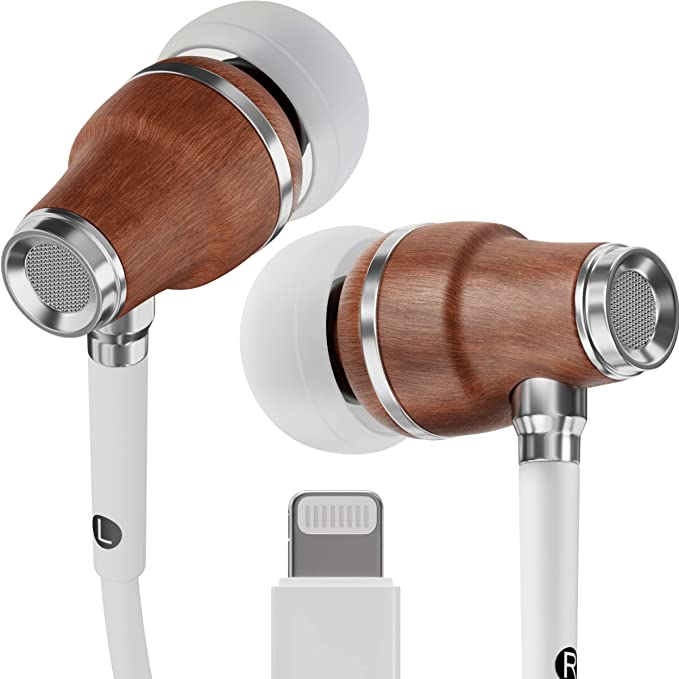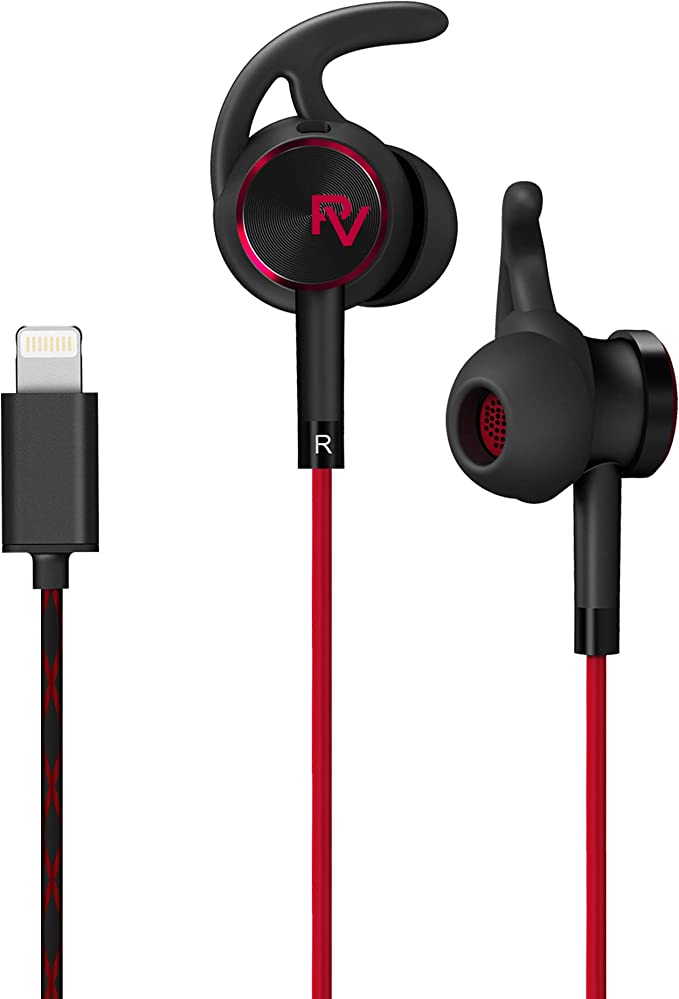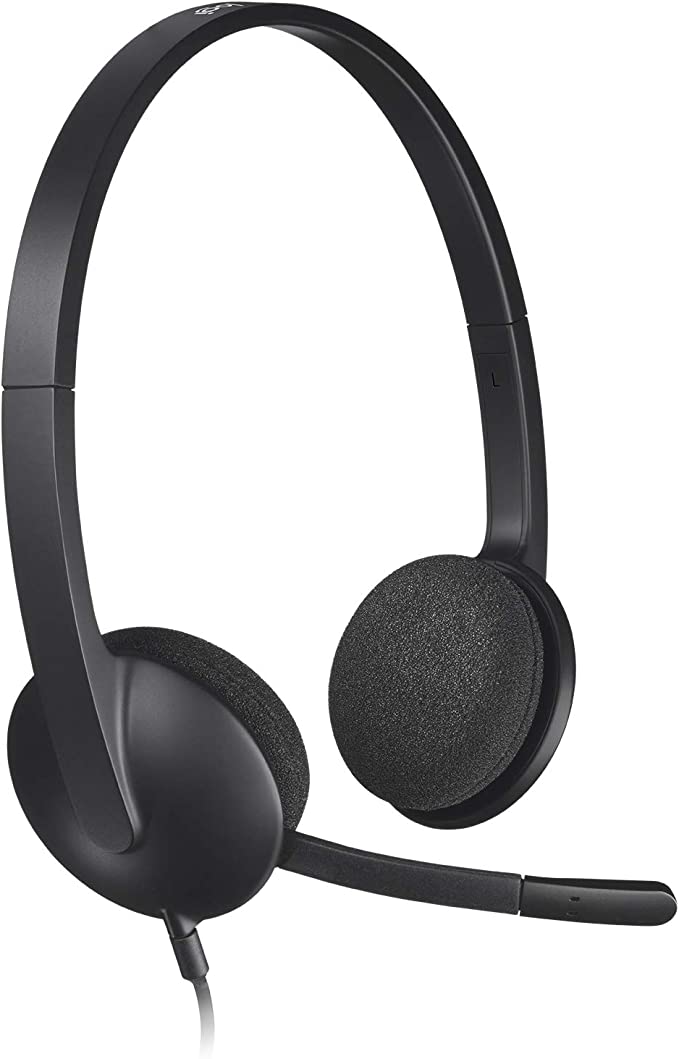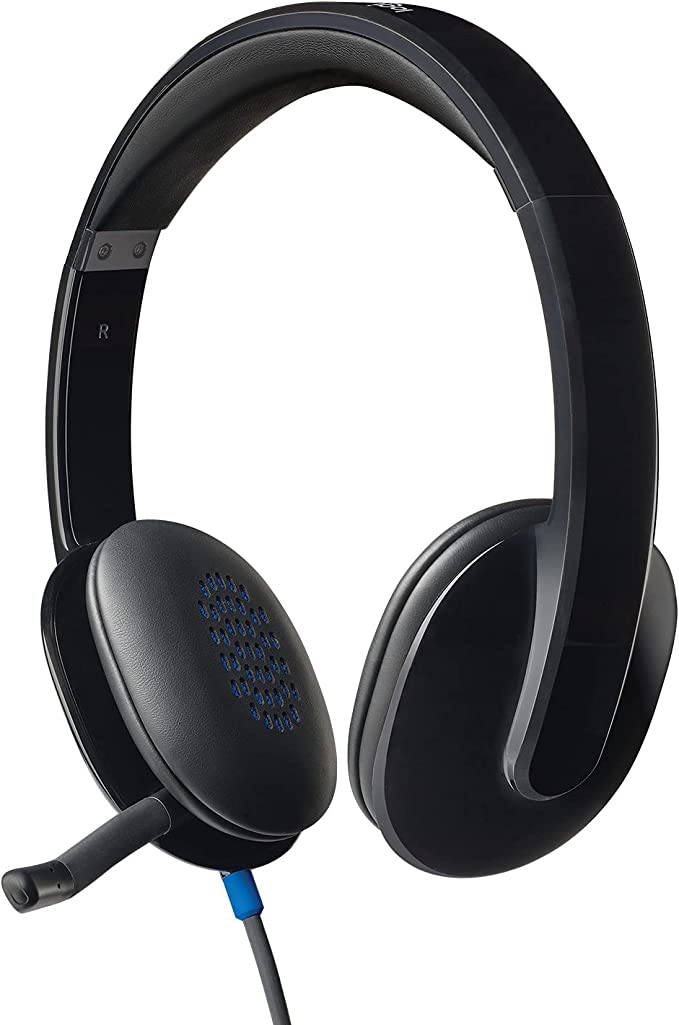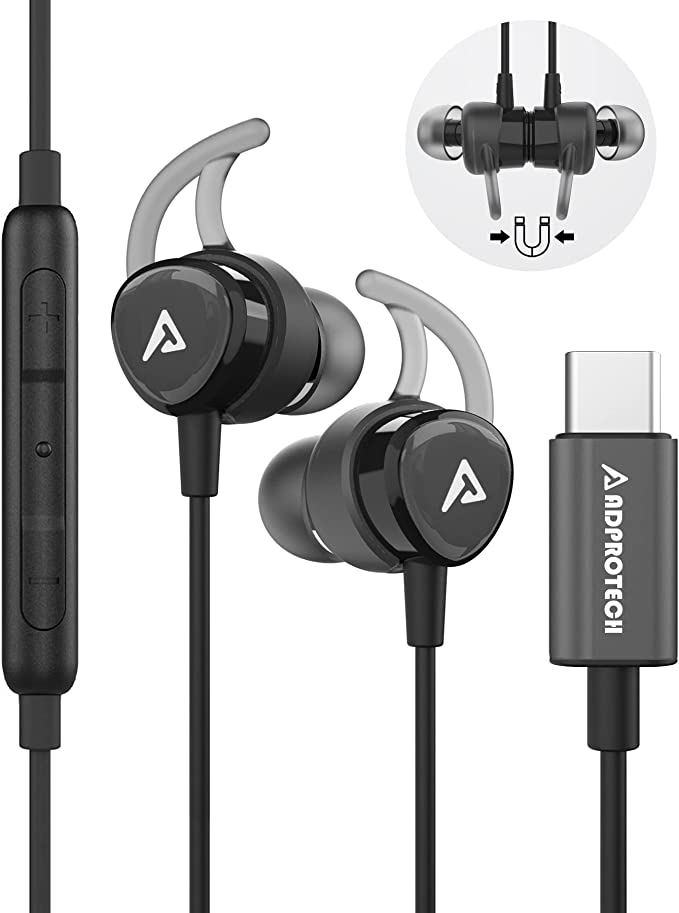ADPROTECH Lightning Headphones: MFi Certified Sound Science for Your iPhone
Update on April 13, 2025, 1:45 p.m.
We live in a world largely untethered from the traditional 3.5mm headphone jack. While Bluetooth offers freedom, many of us still crave the straightforward reliability of a wired connection for our iPhones – no charging needed, no pairing fuss, just plug and play. But not all wired solutions are created equal, especially in the Apple ecosystem. Enter headphones like the ADPROTECH Lightning Earbuds. On the surface, they look like a simple pair of in-ear monitors designed for the iPhone’s Lightning port. But beneath that familiar form factor lies a blend of specific technologies and design choices worth understanding. Let’s peel back the layers and explore the science that makes these headphones tick.

The Handshake That Matters: Why MFi Certification is Your Assurance
You’ll often see the “MFi Certified” badge on accessories designed for Apple devices, including these ADPROTECH headphones. It stands for “Made for iPhone/iPad/iPod,” but what does it really mean for you? Think of it less as a simple logo and more as an official passport, granting reliable access to your device’s capabilities.
MFi is Apple’s licensing program, and it’s a stringent one. For a product to earn this certification, it must meet Apple’s demanding standards for quality, durability, and crucially, electronic compatibility. It ensures the Lightning connector isn’t just shaped correctly, but that it speaks the precise digital language your iPhone or iPad expects. This verified “digital handshake” is fundamental. It guarantees seamless communication for audio playback, microphone input, and remote control functions (like adjusting volume or activating Siri).

Why is this so important? It translates directly to reliability. An MFi-certified product is designed to work flawlessly out of the box and, critically, to keep working reliably even after iOS updates. Apple invests heavily in maintaining its ecosystem, and MFi ensures accessories play by the rules. It’s your assurance against the frustrating compatibility issues or performance glitches that can plague non-certified accessories. As ADPROTECH notes, this certification is verifiable in Apple’s public database, offering a layer of transparency and trust.
Hearing in Digital: The DAC and the Lightning Audio Advantage
The transition from the old analog 3.5mm jack to the Lightning port wasn’t just about connector shape; it marked a fundamental shift to digital audio transmission directly to the headphone. This has significant implications for sound quality.
Your iPhone stores music as digital data – a stream of ones and zeros. Our ears, however, understand analog sound waves. Bridging this gap requires a crucial component: the Digital-to-Analog Converter, or DAC. Think of the DAC as a highly skilled translator, converting that digital code back into the nuanced analog waves that represent music. With Lightning headphones like these, the DAC isn’t hidden deep inside your phone; it’s built right into the headphones themselves (often within the inline remote housing).
ADPROTECH specifies that these earbuds feature “advanced DAC chipsets” capable of handling up to 24bit/96kHz digital audio. Let’s decode that. * Bit Depth (24bit): This relates to the dynamic range – the difference between the quietest whisper and the loudest crescendo in the audio. Higher bit depth allows for more potential levels of volume, potentially revealing finer details and subtleties in the music. Imagine it like adding more shades of color to a digital picture. * Sample Rate (96kHz): This refers to how many times per second the original analog sound wave was measured (sampled) when the digital audio was created. A higher sample rate can capture a wider range of frequencies, including those at the very upper edge of human hearing, potentially contributing to a more open and natural sound. Think of it as increasing the ‘frames per second’ in a video for smoother motion.
Now, does this guarantee audiophile-grade sound? Not necessarily on its own. The final listening experience always depends heavily on the quality of the original recording and audio file (a standard Spotify stream won’t magically become high-resolution). However, having a DAC capable of handling 24bit/96kHz means the headphones possess the potential to faithfully reproduce high-resolution audio if you have access to it. It ensures the conversion process itself is less likely to be a bottleneck, offering a pathway to clearer, potentially more authentic sound compared to basic converters.

The Physics of Fit and Focus: Ergonomics and Sound Isolation
How headphones feel and stay in your ears is just as crucial as how they sound, particularly if you’re active. ADPROTECH emphasizes an ergonomic design featuring not just interchangeable Eartips (in Small, Medium, and Large) but also stabilizing “EarWings.” This combination tackles comfort and stability through applied physics and anatomy.
The primary goal of an in-ear design is to create a good seal within the ear canal. This seal is the foundation of passive sound isolation. Unlike active noise cancellation (ANC) which uses microphones and processing to electronically counteract ambient sound, passive isolation works purely through physics – it creates a physical barrier. Think of it like closing a window to reduce street noise. A snug fit with the correct size Eartip blocks a significant amount of external sound from reaching your eardrum. This allows you to immerse yourself in your audio at lower, safer volumes, and it’s a key benefit noted by users who appreciate the “good noise blocking.”
But what about staying put, especially during a run or workout? That’s where the EarWings come in. These small, flexible fins are designed to tuck comfortably into the cymba conchae – one of the outer curves of your ear. They act like soft, gentle anchors, leveraging the ear’s natural shape to provide extra points of contact and resist the rotational forces that cause earbuds to loosen and fall out. It’s a simple yet effective ergonomic solution, turning your own ear into part of the securing mechanism, leading users to cheer for the “ear wings for the win” when it comes to stability. Finding the right combination of Eartip size and EarWing placement is key to unlocking both comfort and that secure, sound-isolating fit.

Ingenious Simplicity: Magnets and Fingertip Control
Beyond the core audio and fit technologies, thoughtful usability features enhance the daily experience. The magnetic earbuds are a prime example. It’s a simple application of basic magnetism, but the payoff is significant. When you take the earbuds out, they click together neatly, allowing you to wear them securely around your neck. This drastically reduces the chances of them becoming a tangled mess in your pocket or bag – the bane of many wired headphone users. It also keeps them readily accessible and potentially reduces strain on the cable joints over time. Users consistently find this magnetic feature genuinely convenient.
Complementing this is the inline remote control. This small module provides tactile buttons for managing your audio and calls without needing to reach for your iPhone. You get the standard, intuitive controls: volume up/down, play/pause, skip tracks (double-click for next, triple-click for previous), answer/end calls, and even a long press to activate Siri. The reliability of these controls goes back to that crucial MFi certification, ensuring your button presses are instantly and accurately registered by your device via the Lightning connection. It’s fingertip command, made dependable.

Bringing It All Together: The ADPROTECH Experience
So, what does this all add up to? The ADPROTECH Lightning Headphones represent a carefully considered package for the iPhone user seeking a reliable wired audio solution. The MFi certification provides a foundation of trust and seamless compatibility. The direct Lightning connection, coupled with a capable internal DAC, offers the potential for clear, detailed digital audio. The ergonomic design, with its emphasis on a secure, isolating fit via Eartips and EarWings, caters to both everyday listening and more active pursuits. And practical touches like the magnetic earbuds and intuitive inline controls smooth out the daily user experience.
While personal preferences in sound signature and the ultimate comfort of any in-ear device will always be subjective, the science and design principles embedded in these headphones aim to deliver a consistent, convenient, and high-quality listening experience. They stand as a testament to the fact that even in an increasingly wireless world, a well-executed wired headphone, built specifically for its ecosystem, still holds significant value, offering straightforward, dependable audio right from the port.


